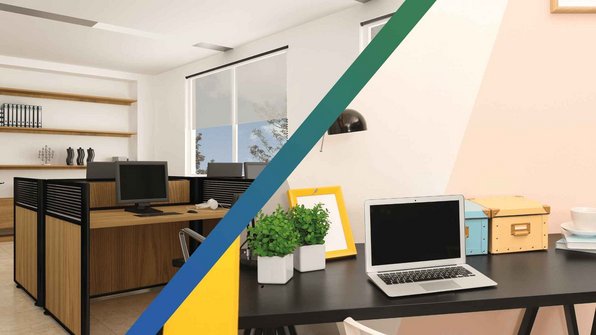Rinkel and VoIP: What's the deal?

VoIP: A well-known term in the telecommunications industry. When looking for the different options for a business telephone system, you quickly find VoIP solutions. Makes sense, considering there's a lot of VoIP providers available. They come in all shapes and sizes: with or without landline devices, and including or excluding a Webphone.
But oh well. We know that already. The real question is: Where is Rinkel in this story? Nowhere do we say we're a VoIP provider. And considering Team Support regularly gets questions about this, it's time to spill the beans once and for all. Rinkel & VoIP: What's the deal?
To get straight to the point: We are not a VoIP provider. In this article we'll explain why not, as well as how Rinkel does work.
What is VoIP?
Let's start at the beginning: What is VoIP? VoIP stands for Voice over Internet Protocol. Or better said: Calling via the internet.
A call is set up using your internet connection. You might see VoIP the replacement of ISDN telephone exchanges. Or better yet: When you still had a physical cable in your house (or the flooring and the wall, really) that went to your physical landlines. Because at one point, most of us had more than one home phone. Their docking stations were scattered around the house, including the bedroom or garage. Anyway. Those days are long gone. We no longer need the cables. Or house phones for that matter. (Fun fact: Those cables that went into the wall or flooring were called PTT connections.)
Anyway, the most important thing to know about VoIP is that it works over the internet. However, what hasn't changed with the arrival of VoIP, are physical phones. In nearly all cases you will need a fixed desk phone. In the end, you're often able to connect your VoIP system to your mobile phone or laptop/PC, but it's often an 'extra' or 'add-on' to your physical landline. This connection is usually set-up using a so-called softphone, on which you install a VoIP account.
Why is Rinkel not a VoIP provider?
We've said it before: we're not a VoIP service. When Jesper and Jeroen founded Rinkel in 2014, this as a conscious decision: Should we provide a VoIP application or not? So they compared the pros and cons of both solutions. Turns out, a VoIP solution was not the best technical match for the service they had in mind. So they went with the cell phone network instead!
The two main arguements for not developing a VoIP solution:
- The connection with VoIP is not very stable: There's often hiccups and fluctuations in the network, and the connection drops faster than when using the mobile network.
- National coverage cannot be guaranteed: If you're in the polder, or in a National Park (where there's often less coverage), you're MIA. You cannot make or receive calls. The mobile network in this sense is much more reliable, even when the coverage is a bit less.
And your phone systems just have to be good. You must be able to rely on your telecom provider and its network. That was (and is) Rinkel's vision.
How does Rinkel work?
Are you calling with your Rinkel number? Then you're calling using your own phone's network. In other words: the same system and network as when you call with your 06 or private number.
The internet is not involved here. The connection is set up using the 'standard' 2G connection via the antenna or telephone mast in your area. And there's a lot of those!
That saves you, because:
- You don't have to pay for expensive internet costs
- You only pay for the calling minutes you use (or it's included in your subscription!)
- You don't pay calling minutes to both your mobile provider and Rinkel, because it's never you who initiated the call. Technically. When placing a call with your Rinkel phone number, you will first receive a call. As soon as you answer this call, the conversation starts with the number you wanted to dial. We call this a "two-step call".
- You have a better connection! Meaning no dropping conversations or hiccups.
Once you start the My Rinkel app, we only use a small amount of data to connect to our systems. That's all!
What about the Rinkel Webphone?
Good question! Turn your browser into a telephone with our Webphone, allowing you to call from your laptop or computer.
Of course, this does work via the internet. So you could group it under 'VoIP'. However, the Rinkel Webphone was not developed with the standard technologies used in VoIP.
It's actually a WebRTC application. A relatively new technique, which is also used by, for example, Zoom or Microsoft Teams. Their implementation of WebRTC focuses on collaboration, and video calling to work together. A different strategy. Rinkel is the first Dutch company to use this new technology in combination with traditional telecom networks.



